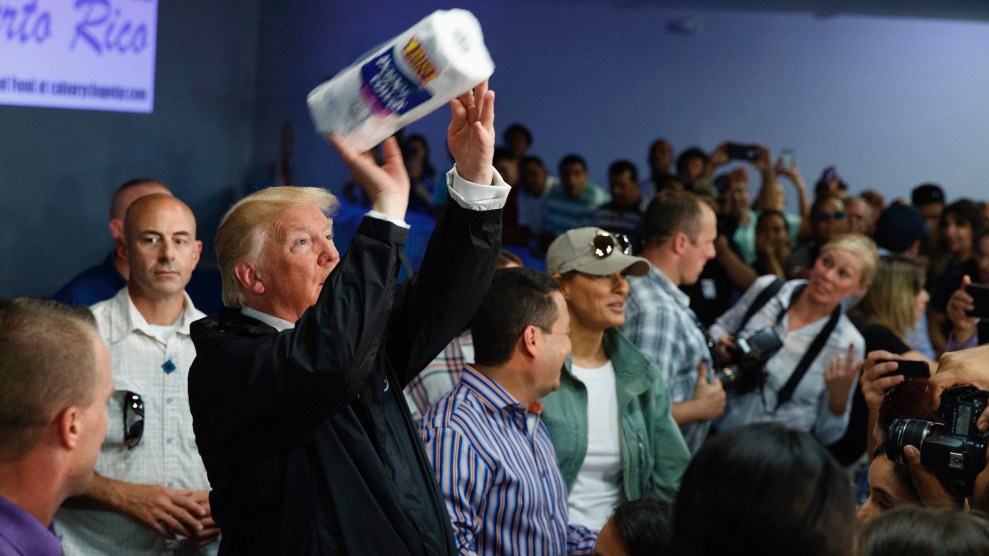
President Donald Trump tosses paper towels into a crowd at Calvary Chapel in Guaynabo, Puerto Rico in October 2017. AP Photo/Evan Vucci
Donald Trump’s initial reaction to the devastating hurricanes that hit Puerto Rico in 2017 were to suggest that the United States sell, or “divest” from the territory, a former acting secretary of Homeland Security said on Friday. Elaine Duke, who served as Trump’s second secretary of Homeland Security, replacing John Kelly when he became Trump’s chief-of-staff, has become the latest former Trump cabinet member to speak out against her old boss, telling the New York Times in an interview this past week that Trump cares little about policy, and uses “hate-filled, angry and divisive” language.
Duke was acting secretary when she signed off on ending the DACA protections—the program set up by the Obama administration to protect young undocumented immigrants, known as Dreamers, from deportation. Duke told the Times that she agreed the program was illegal, but wasn’t ready to sign off on its closure, and that she was “ambushed” by Trump and his political allies at an August 2017 White House meeting. Last month the Supreme Court ruled that the DACA program was improperly ended—giving the Dreamers a reprieve, but also opening the door for the Trump administration to try again.
Duke also described to the Times how as Hurricane Maria approached Puerto Rico in the fall of 2017—it would go on to devastate the island, leaving much of it without power for months—other Trump cabinet members derided her for trying to urge the president to take it more seriously. Duke said that Trump did initially show concern for the suffering of Puerto Rican people after the disaster, but was disturbed by his first instincts on how to react:
“The president’s initial ideas were more of as a businessman, you know,” she recalled. “Can we outsource the electricity? Can we can we sell the island? You know, or divest of that asset?”
She said the idea was never seriously considered or discussed after that meeting.
















